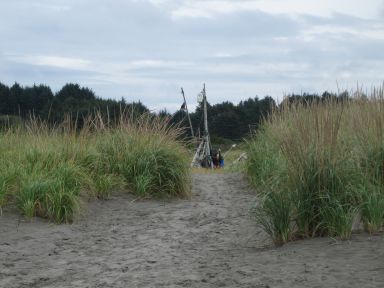
2010-09-16: Flotsam-Jetsam
Our campground is a short walk through the dunes to a wonderful sandy beach. This flotsam-jetsam (floating stuff/thrown stuff) helps us find our way back to camp after walking the beach.
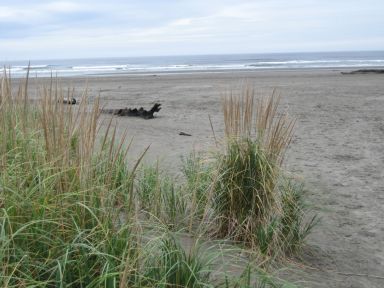
2010-09-16: Beach Grass
This area has wonderful sand dunes, beach grass, sand dollars and miles of sandy beaches. The only thing that was missing this year were gorgeous sunsets which we missed because it rained most of the time we were here.
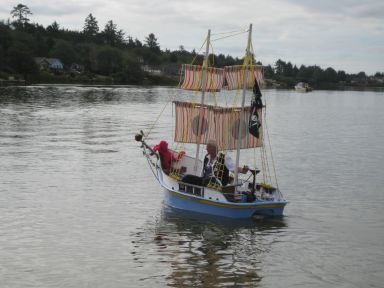
2010-09-18: On Your Marks
Duck Lakes are a network of 25-miles of man-made lakes throughout Ocean Shores. Today we went to see the "human powered" races being held. The cannon on this little pirate boat fired and the boats took off.

2010-09-18: Boats
There were kayaks, canoes and stand-up paddlers. Watching almost made us wish we were in a kayak with them.
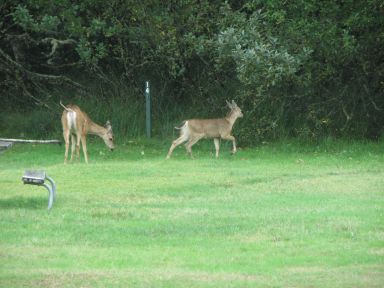
2010-09-19: Long Beach Peninsula
Our next stop was Long Beach Peninsula with its miles of hard packed sand. Soon after we arrived we saw this doe and fawn grazing right in front of our coach. We were also told that there have been bear and raccoons seen roaming through our campground.
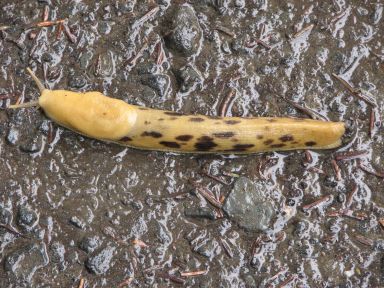
2010-09-19: Slug
Since the rain stopped this afternoon we decided to take a tour of the southern peninsula area. Walking down the path to one of the lighthouses, we found this HUGE, colorful slug.
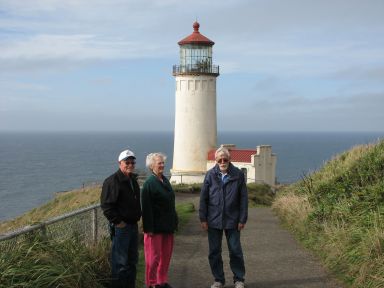
2010-09-19: North Head Light
The North Head Lighthouse is perched atop a promontory of basalt. It has stood as a guardian over the Graveyard of the Pacific at the mouth of the Columbia River since 1898 and welcomes sailors approaching the river from the north. This lighthouse was automated in 1961.
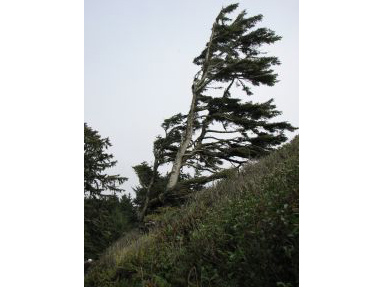
2010-09-19: Tree
Winter winds here have been clocked at 160 mph and have created misshaped trees such as this one.
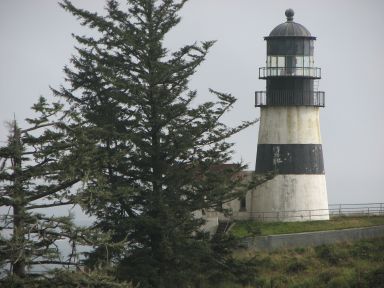
2010-09-19: Cape Disappointment
Cape Disappointment Lighthouse guides mariners into the mouth of the Columbia River. The 53-foot masonry lighthouse was completed in 1856.
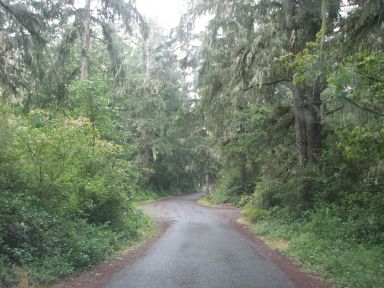
2010-09-20: Leadbetter Point
We took a ride to the northern most point of the peninsula to Leadbetter Point State Park. To get there, we drove this one lane road through an old cedar forest that was very dramatic.

2010-09-20: Oysters
We stopped at Oysterville Sea Farms. It is housed in the old cannery building which was put on the Registry of Historic Places in 1976. All restoration and renovation of this building has been paid for from revenues generated through purchases of oysters and other shellfish sold here.
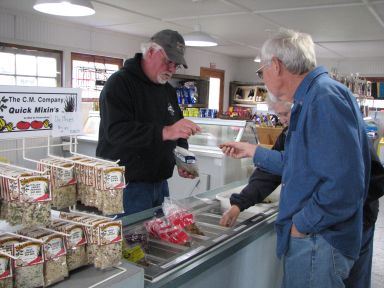
2010-09-20: Tasters
Clare and Al sampled some smoked oysters before buying some of the fresh kind for dinner.
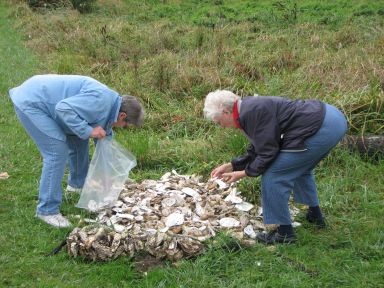
2010-09-20: Oyster Shells
With a craft project in mind, Clare and Tryna collected some oyster shells.
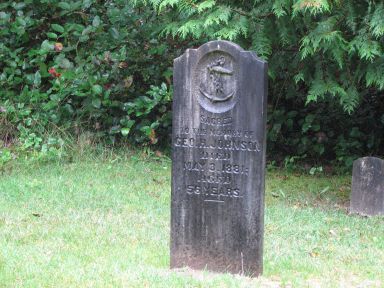
2010-09-20: Cemetery
The Oysterville Cemetery has headstones that date back to the mid-1800's. We even found this 1800's headstone marking where this Chinook chief was buried.
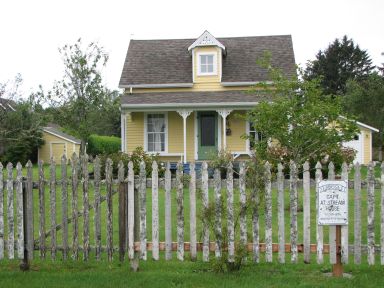
2010-09-20: Oysterville
For generations before the pioneer settlers arrived in this area, Chinook Indians gathered oysters in this part of Willapa Bay. The first white settlers arrived in 1854 and began gathering tiny native oysters which they marketed in gold-rich, oyster hungry San Francisco. Thus the small town of Oysterville grew and then, in the late 1880's when the native oysters became scarce and the railroad ended 4-miles south, residents moved out en masse and the sleepy village became a place "where time stood still". Today Oysterville is on the National Register of Historical Places and encompasses about 80 acres of the original village.

2010-09-20: Baptist Church
Built at a cost of $1500, the church was built in 1892. No regular services have been held in the church since the mid-1930's.
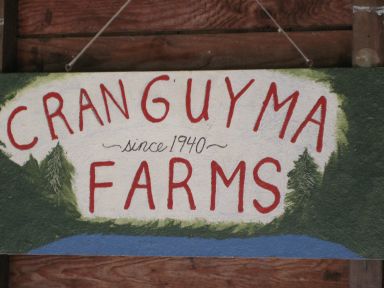
2010-09-21: U-Pick
Off we went bright and early this morning to Cranguyma Farms to pick blueberries. These were old bushes that made picking difficult because the berries weren't growing in clumps. We did pick about a pound of berries and only had to pay $1.75 so it was time well spent.
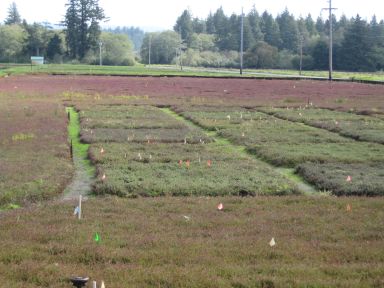
2010-09-21: Cranberry Bog
Cranberries have been grown in Washington since 1883. There are 8,000 acres of commercial cranberries grown on the west coast and an additional 42,000 acres on the east coast. It was fun getting up-close to the bog so we could see the cranberries growing on the vines. In another few weeks, the bogs will be flooded and the cranberries will be harvested and shipped in time for Thanksgiving.
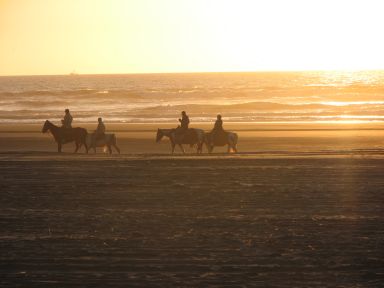
2010-09-21: Beach
We finally had a sunny day which of course translates into a sunset at the beach. We not only saw horses on the beach but finally...
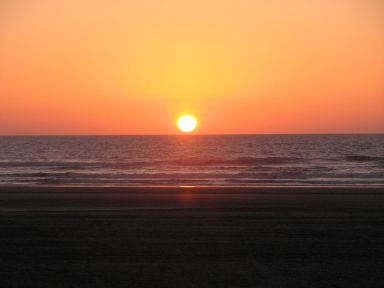
2010-09-21: Sunset
...a beautiful sunset.